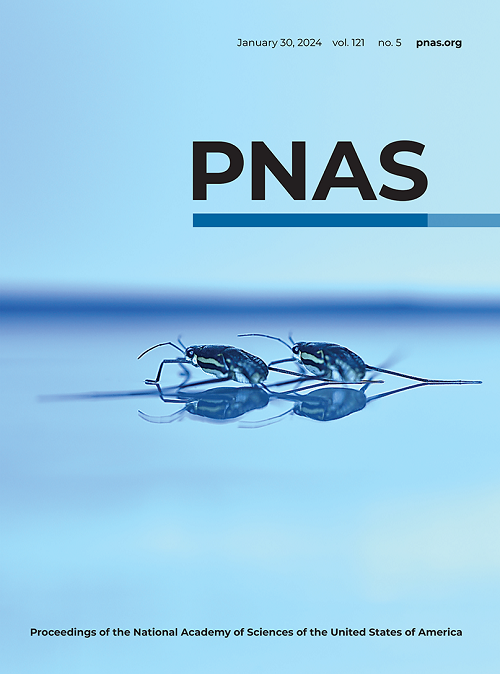TMEM63A, associated with hypomyelinating leukodystrophies, is an evolutionarily conserved regulator of myelination
IF 9.1
1区 综合性期刊
Q1 MULTIDISCIPLINARY SCIENCES
Proceedings of the National Academy of Sciences of the United States of America
Pub Date : 2025-07-22
DOI:10.1073/pnas.2507354122
引用次数: 0
Abstract
Infantile hypomyelinating leukodystrophy 19 (HLD19) is a rare genetic disorder where patients exhibit reduced myelin in central nervous system (CNS) white matter tracts and present with varied neurological symptoms. The causative geneTMEM63A与低髓鞘性白质营养不良有关,是髓鞘形成的进化保守调节因子
婴儿低髓鞘性白质营养不良19 (HLD19)是一种罕见的遗传性疾病,患者在中枢神经系统(CNS)白质束中表现出髓鞘减少,并表现出各种神经系统症状。致病基因TMEM63A编码一个机械敏感离子通道,其在髓鞘形成中的作用在很大程度上尚未被探索。我们的研究表明,TMEM63A是中枢神经系统中少突胶质细胞(OL)依赖性髓鞘形成的主要调节因子。在小鼠和斑马鱼中,Tmem63a失活导致髓鞘形成的早期缺陷,重现了HLD19表型。ol特异性条件小鼠敲除Tmem63a表现出髓磷脂的短暂减少,表明Tmem63a自主调节髓鞘细胞。我们发现TMEM63A存在于质膜和溶酶体上,并在机械信号存在的情况下调节髓磷脂的产生。有趣的是,来自患者的hld19相关的TMEM63A变异阻止了向细胞膜的运输。总之,我们的研究结果揭示了TMEM63A在体内髓鞘形成的基本方面的古老作用,并强调了两个令人兴奋的模型,用于开发破坏性髓鞘性低白质营养不良的治疗方法。
本文章由计算机程序翻译,如有差异,请以英文原文为准。
求助全文
约1分钟内获得全文
求助全文
来源期刊
CiteScore
19.00
自引率
0.90%
发文量
3575
审稿时长
2.5 months
期刊介绍:
The Proceedings of the National Academy of Sciences (PNAS), a peer-reviewed journal of the National Academy of Sciences (NAS), serves as an authoritative source for high-impact, original research across the biological, physical, and social sciences. With a global scope, the journal welcomes submissions from researchers worldwide, making it an inclusive platform for advancing scientific knowledge.

 求助内容:
求助内容: 应助结果提醒方式:
应助结果提醒方式:


